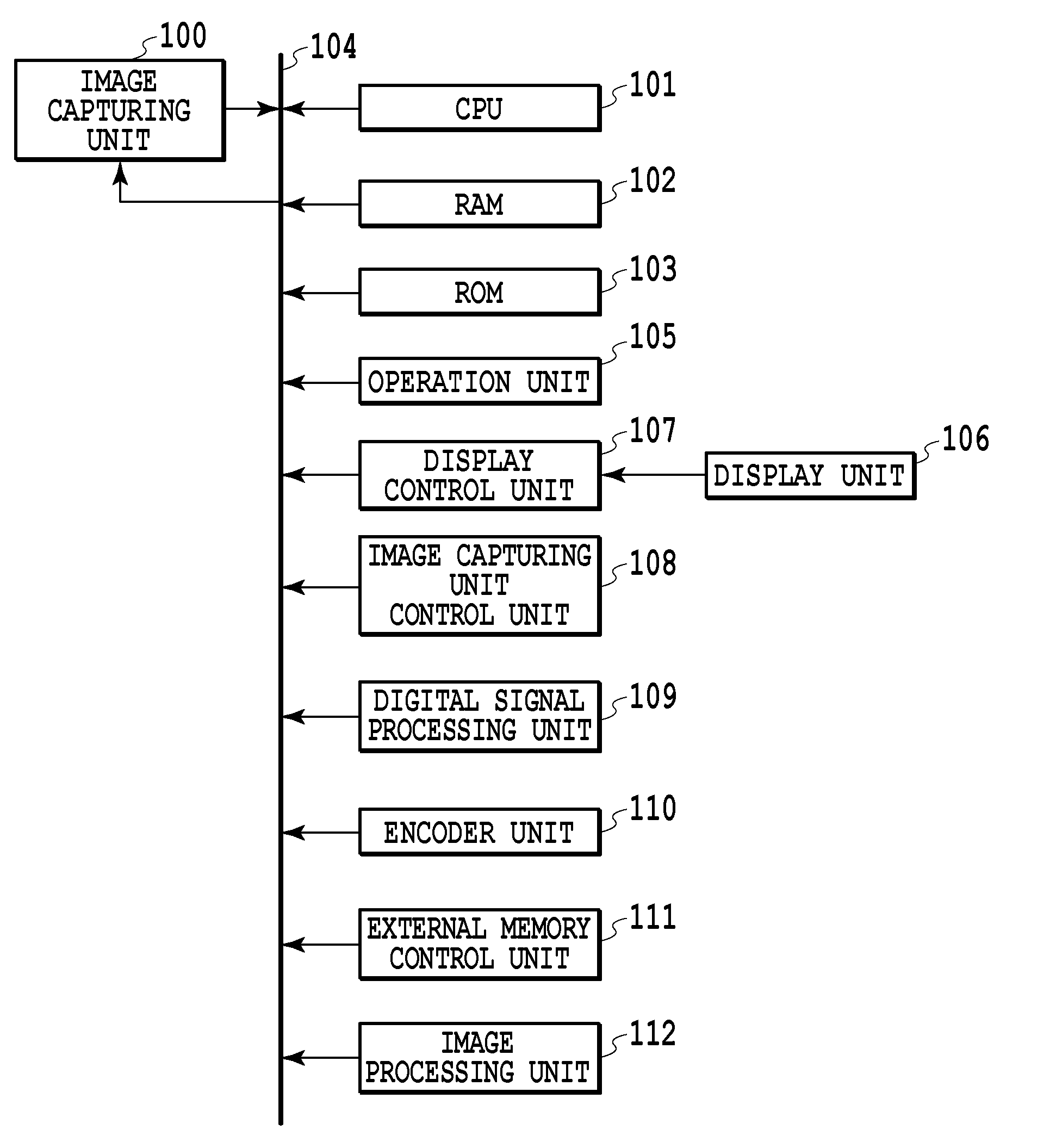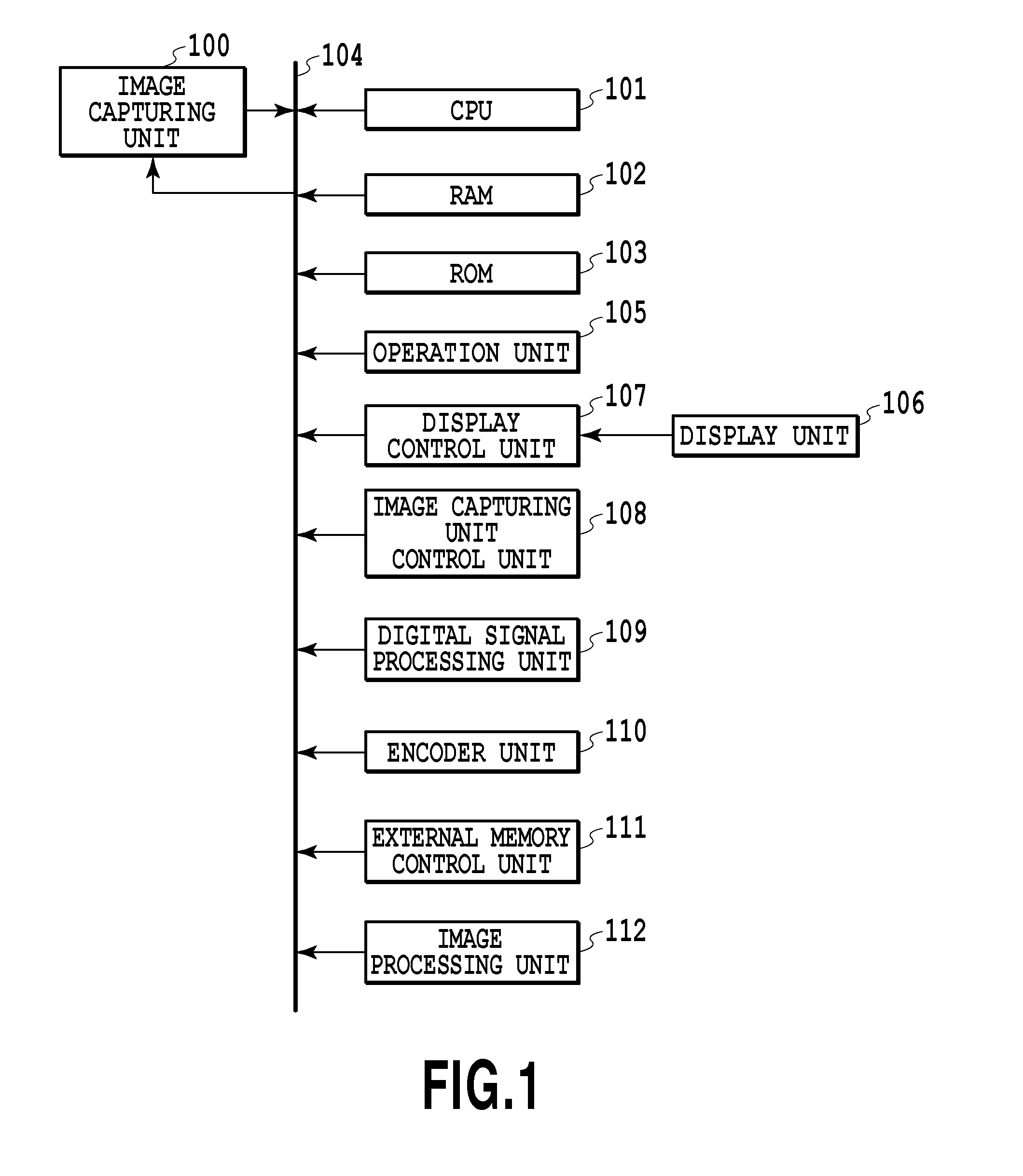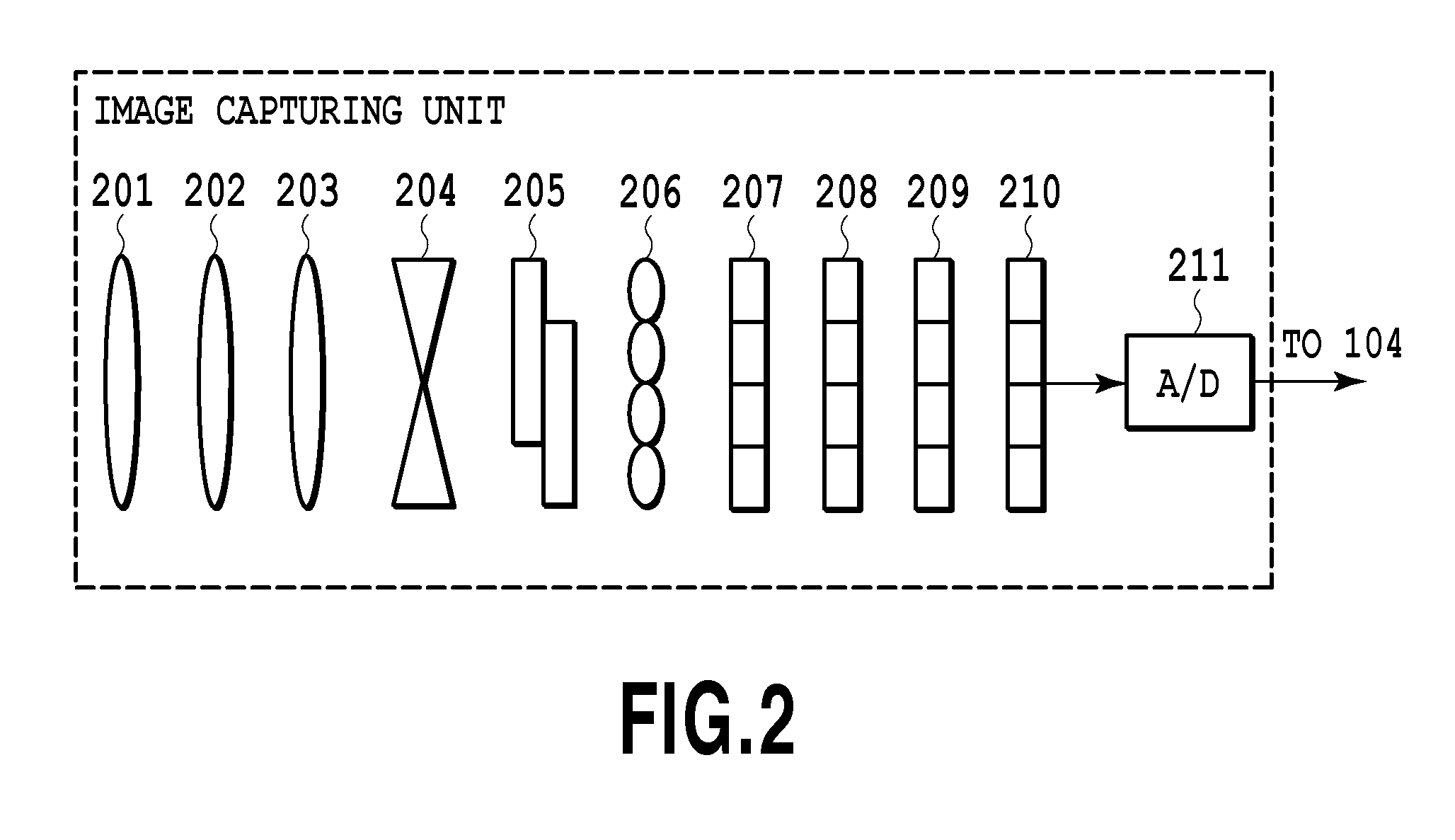Image processing device, image processing method, and program
a microlens array and image processing technology, applied in the field of microlens array calibration, can solve the problems of inability to obtain deviations in the mounting position of the microlens array from the design value, inability to provide an image refocused accurately at the desired subject distance, and loss of sharpness of the image obtained by refocus processing, etc., to achieve high precision
- Summary
- Abstract
- Description
- Claims
- Application Information
AI Technical Summary
Benefits of technology
Problems solved by technology
Method used
Image
Examples
first embodiment
[0043]FIG. 1 is a block diagram showing an internal configuration of an image capturing device according to a first embodiment.
[0044]An image capturing unit 100 receives light information of a subject with an image sensing element and A / D converts the received signal to acquire color image data (digital data). Details of the image capturing unit 100 will be described later. A central processing unit (CPU) 101 totally controls each unit described below. A RAM 102 functions as a main memory, a work area etc., of the CPU 101. A ROM 103 stores control programs etc. executed by the CPU 101. A bus 104 is a transfer path of various kinds of data and for example, digital image data acquired by the image capturing unit 100 is sent to a predetermined processing unit via the bus 104. An operation unit 105 configured to receive a user's instruction includes buttons, mode dials, etc. In a display unit 106 configured to display captured images and characters, for example, a liquid crystal display...
second embodiment
[0129]The first embodiment is an aspect in which the f-stop (F-number) of the main lens selected at the time of calibration of the microlens array is set to a value relatively larger than the f-stop of the main lens at the time of final image capturing (the state where the aperture is stopped down). Next, an aspect is explained as a second embodiment, in which data of an image captured at the time of calibration is analyzed and an appropriate f-stop of the main lens is selected and then calibration of the microlens array is performed. Explanation of parts common to those of the first embodiment is simplified or omitted and here, the different points are explained mainly.
[0130]
[0131]FIG. 21 is a block diagram showing an internal configuration of the image processing unit 112 in the present embodiment. An image analyzing unit 2101 is added to the image processing unit 112 of the first embodiment explained in FIG. 8. The image analyzing unit 2101 analyzes data of an image captured for ...
third embodiment
[0168]The second embodiment is an aspect in which data of an image captured for calibration of the microlens array is analyzed and calibration is performed after selecting an appropriate f-stop (F-number) of the main lens. Next, an aspect is explained as a third embodiment, in which data of an image captured for calibration is analyzed and in the case that the data of the captured image is not suitable for calibration, warning to that effect is given to a user. Explanation of parts common to those of the second embodiment is simplified or omitted and here different points are explained mainly.
[0169]The internal configuration of the image processing unit 112 in the third embodiment is basically the same as the internal configuration of the image processing unit 112 shown in FIG. 21 according to the second embodiment. Although not shown schematically, the different point is that the analysis result of the image analyzing unit 2101 is sent also to the display control unit 107 in additi...
PUM
 Login to View More
Login to View More Abstract
Description
Claims
Application Information
 Login to View More
Login to View More - R&D
- Intellectual Property
- Life Sciences
- Materials
- Tech Scout
- Unparalleled Data Quality
- Higher Quality Content
- 60% Fewer Hallucinations
Browse by: Latest US Patents, China's latest patents, Technical Efficacy Thesaurus, Application Domain, Technology Topic, Popular Technical Reports.
© 2025 PatSnap. All rights reserved.Legal|Privacy policy|Modern Slavery Act Transparency Statement|Sitemap|About US| Contact US: help@patsnap.com



